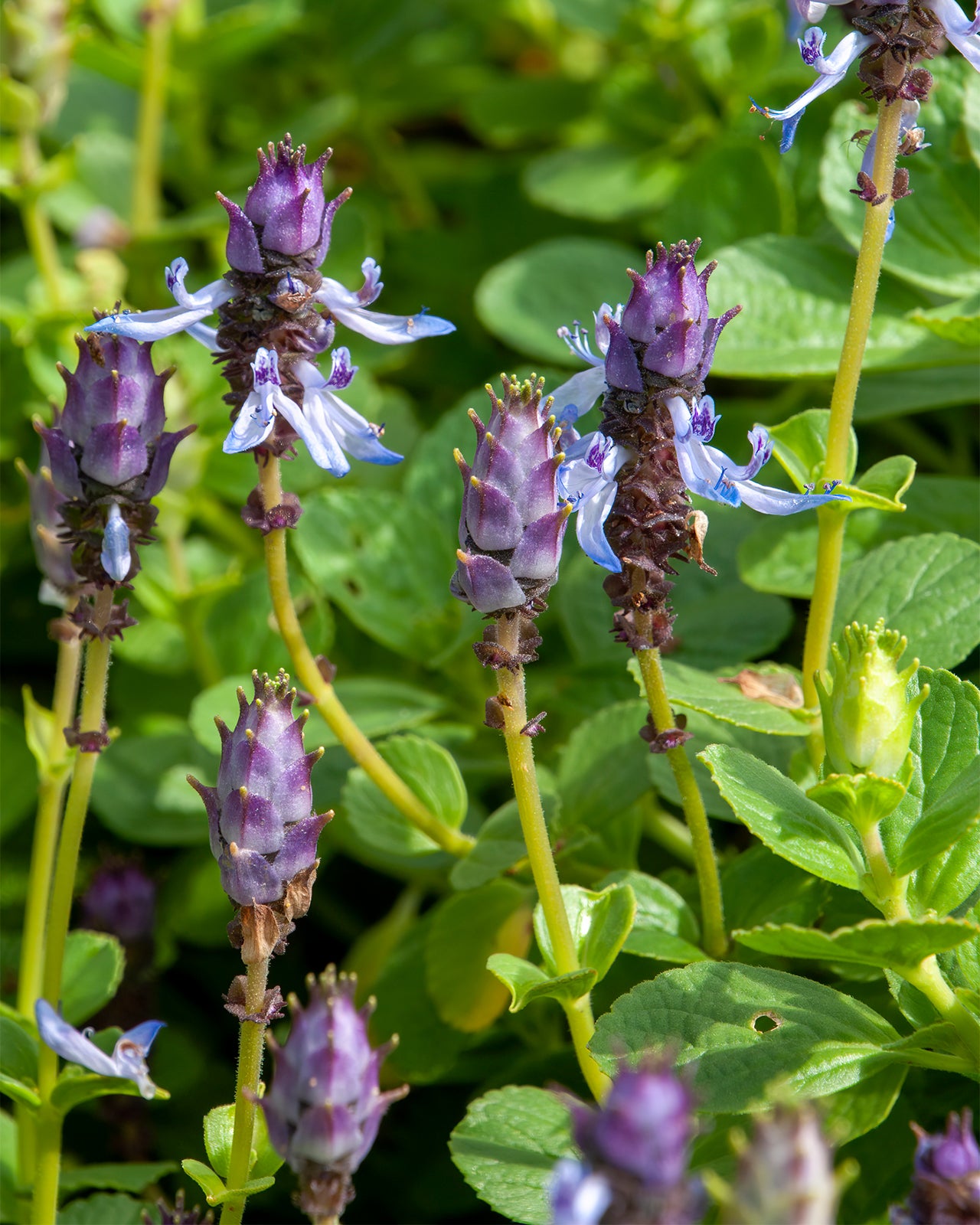

-
Why we like this plant
If you’re after a fuss-free, aromatic border plant that brings summer blooms and might keep cats and other critters at bay, Scaredy Cat plant is a clever choice. Its charming foliage and pollinator-friendly flowers make it a useful, attractive addition to gardens or patio pots.
-
About this plant
Coleus caninus, commonly known as Scaredy Cat plant, is a tender perennial from the mint family, valued for its grey-green, scallop-edged foliage and tall spikes of pale violet-blue flowers in summer. Native to eastern and southern Africa and Asia, it emits a distinct, pungent aroma when brushed, reputed to deter cats, dogs, rabbits and deer. Ideal for borders or containers in warm climates, it is drought-tolerant, low-maintenance and attractive to pollinators.
-
Key features
- Grey-green scallop-edged leaves with a sticky texture
- Upright spikes of violet-blue flowers in summer
- Drought-tolerant once established
- Reputed cat and small mammal deterrent due to pungent scent
- Attracts bees and butterflies
-

Eventual height and
spreadHeight: 40 cm | Spread: 40 cm
-

Growth
habitCompact, bushy and upright, growing in a neat mound with upright flower stems and a tendency to stay well-behaved without frequent intervention.
-

Moisture
Dry to moderately moist; avoid waterlogged conditions
-

Position in
the GardenFull sun to partial shade
Planting guide
Plant in a sunny or partially shaded spot in well-drained soil. Space plants around 40–60 cm apart. For container growing, use a free-draining compost mix. Plant after all risk of frost has passed.
Care tips
Coleus caninus prefers a sunny spot with partial shade at the hottest times and does well in well-drained soil that is not overly rich. Water moderately, allowing the top of the soil to dry out between waterings, and reduce watering once established to avoid root rot. Feed monthly with a balanced fertiliser during its active growing season. Trim back spent flower spikes and pinch out tips to promote bushiness. Wear gloves when handling or pruning, as bruising the foliage releases its strong scent.
Winter care
Provide frost protection in cooler climates or grow in containers that can be moved indoors, as it is tender and may drop leaves if exposed to cold damp conditions.











